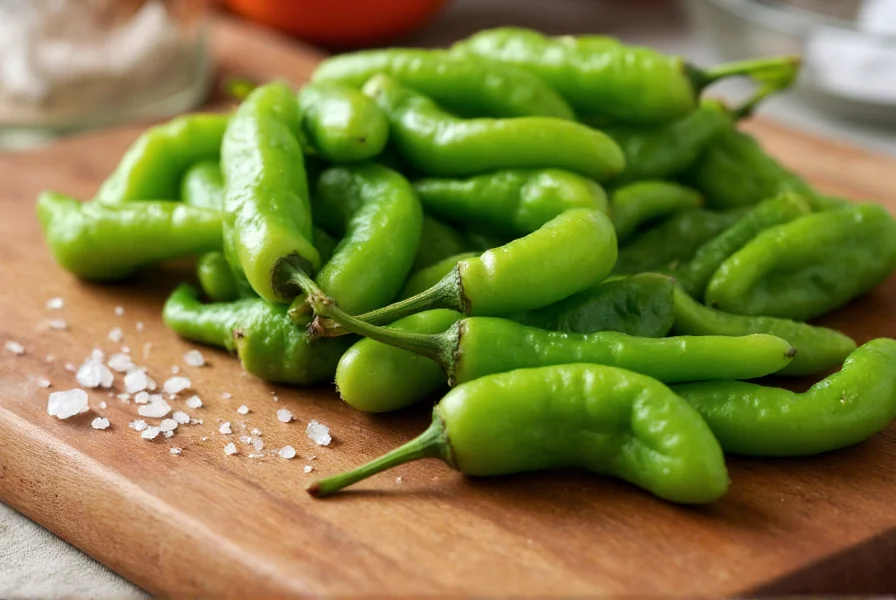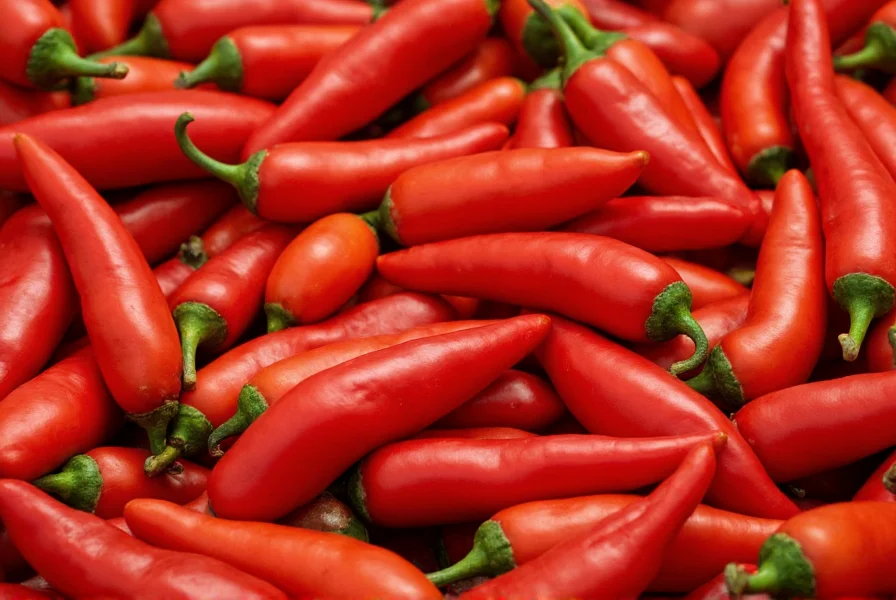When exploring Japanese cuisine, few ingredients offer the perfect balance of flavor and simplicity like the shashito pepper. These slender, bright green peppers have gained international popularity for their approachable heat level and culinary versatility. Understanding their unique characteristics helps home cooks and food enthusiasts incorporate them authentically into dishes.
Origin and Background of Shashito Peppers
Shashito peppers ( Capsicum annuum ) originate from Japan, where they've been cultivated for generations as part of traditional cuisine. The name "shashito" translates to "little arrow" in Japanese, referring to their slender, pointed shape. While often confused with shishito peppers, shashitos represent a distinct variety with subtle differences in appearance and flavor profile.
Physical Characteristics and Identification
Shashito peppers typically measure 3-4 inches in length with a thin, delicate skin that transitions from vibrant green to deep red as they mature. Their skin features characteristic wrinkles that intensify when cooked. When selecting shashitos at the market, look for firm, unblemished peppers with a consistent green color. Unlike some pepper varieties, shashitos maintain remarkable uniformity in size and shape.

Flavor Profile and Heat Level Analysis
One of the most distinctive features of shashito peppers is their remarkably mild heat—usually registering between 50-200 Scoville Heat Units (SHU). For context, this places them significantly below jalapeños (2,500-8,000 SHU) and even milder than most shishito peppers. Approximately 90% of shashito peppers contain negligible heat, while the occasional pepper might surprise with mild warmth. Their flavor profile combines sweet grassiness with subtle citrus notes, making them exceptionally food-friendly.
| Pepper Variety | Scoville Heat Units | Flavor Profile | Common Culinary Use |
|---|---|---|---|
| Shashito | 50-200 SHU | Sweet, grassy, citrus notes | Grilled, blistered, tempura |
| Shishito | 50-200 SHU (occasionally hotter) | Earthy, slightly smoky | Grilled, sautéed, roasted |
| Jalapeño | 2,500-8,000 SHU | Grassy, bright, vegetal | Salsas, pickled, stuffed |
Shashito vs Shishito Peppers: Clearing the Confusion
The frequent confusion between shashito and shishito peppers stems from their visual similarity and overlapping culinary applications. While both are Japanese pepper varieties, shashitos tend to be slightly smaller (3-4 inches versus 4-6 inches) with more pronounced wrinkles. Shishito peppers occasionally contain "hotter" specimens (about 1 in 10), while shashitos maintain more consistent mildness. Flavor-wise, shashitos offer brighter citrus notes compared to the earthier shishitos.
Culinary Applications and Recipe Ideas
Chefs prize shashito peppers for their ability to transform through simple cooking techniques. The most popular preparation involves blistering them in a hot skillet with minimal oil until charred, then finishing with flaky sea salt. This technique enhances their natural sweetness while creating delightful textural contrast. For those exploring how to cook with shashito peppers, consider these applications:
- Appetizer preparation: Toss whole peppers in neutral oil, blister in cast-iron skillet, finish with sea salt and lemon zest
- Salad enhancement: Add roasted shashitos to green salads for subtle sweetness
- Stir-fry component: Include in vegetable stir-fries during the final cooking minutes
- Pickling candidate: Preserve in rice vinegar brine with garlic and chili flakes
- Grilled vegetable platter: Skewer with other vegetables for outdoor cooking

Nutritional Benefits of Shashito Peppers
Like other chili peppers, shashitos offer notable nutritional advantages despite their small size. They're an excellent source of vitamin C (providing approximately 120% of daily value per 100g), contain significant vitamin A, and deliver antioxidants like beta-carotene. The capsaicin present, though minimal, still contributes potential metabolic benefits. With only 20 calories per 100g and zero fat content, they represent an exceptionally nutrient-dense ingredient for health-conscious cooking.
Where to Find and How to Store Shashito Peppers
Finding authentic shashito peppers requires checking specialty markets. Look for them at Japanese grocery stores, higher-end supermarkets with robust produce sections, or farmers' markets during summer and early fall (their peak season). When selecting, choose firm, glossy peppers without soft spots. For proper storage, keep them unwashed in a perforated plastic bag in the refrigerator's vegetable drawer, where they'll maintain freshness for 7-10 days. Avoid washing until ready to use, as moisture accelerates spoilage.
Growing Shashito Peppers at Home
Gardeners interested in cultivating growing shashito peppers in home gardens will find them relatively straightforward to grow. They thrive in warm climates with full sun exposure and well-draining soil. Start seeds indoors 8-10 weeks before the last frost date, then transplant outdoors when soil temperatures exceed 60°F. Plants typically reach 24-36 inches in height and produce abundant harvests from mid-summer through first frost. The peppers mature from green to red, with green being the preferred culinary stage for most applications.
Common Questions About Shashito Peppers
Are shashito peppers hot?
Shashito peppers are remarkably mild, typically measuring only 50-200 Scoville Heat Units. Approximately 90% of shashito peppers contain negligible heat, with only occasional specimens delivering mild warmth. This makes them significantly milder than jalapeños and more consistently mild than their shishito pepper cousins.
How do you cook shashito peppers?
The most popular preparation involves blistering shashito peppers in a hot skillet with minimal oil until charred (about 5-7 minutes), turning occasionally. Finish with flaky sea salt and optional lemon zest. They can also be grilled, roasted, added to stir-fries, or pickled. Always cook them whole with stems intact to prevent burning.
What's the difference between shashito and shishito peppers?
While visually similar, shashito peppers are typically smaller (3-4 inches versus 4-6 inches for shishitos) with more pronounced wrinkles. Shashitos maintain more consistent mildness (rarely hot), while about 1 in 10 shishito peppers can be surprisingly spicy. Flavor-wise, shashitos offer brighter citrus notes compared to the earthier profile of shishitos.
Where can I buy shashito peppers?
Find shashito peppers at Japanese grocery stores, higher-end supermarkets with robust produce sections (like Whole Foods or Wegmans), or farmers' markets during summer and early fall. They're most commonly available fresh rather than dried or processed. Check the international or specialty produce section if shopping at conventional grocery stores.
How should I store shashito peppers?
Store unwashed shashito peppers in a perforated plastic bag in your refrigerator's vegetable drawer. Properly stored, they'll maintain freshness for 7-10 days. Avoid washing until ready to use, as moisture accelerates spoilage. Do not store at room temperature for extended periods, as they'll deteriorate quickly.











 浙公网安备
33010002000092号
浙公网安备
33010002000092号 浙B2-20120091-4
浙B2-20120091-4